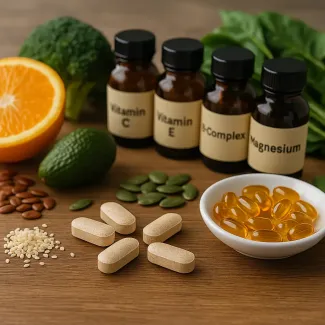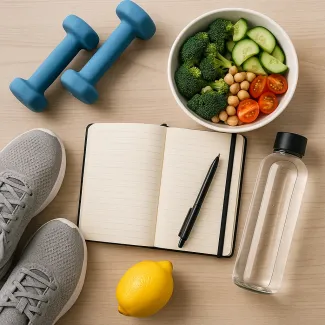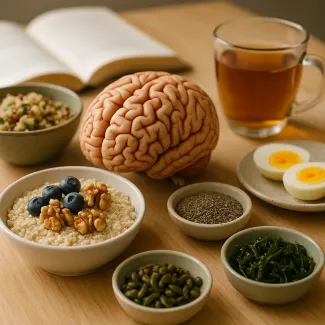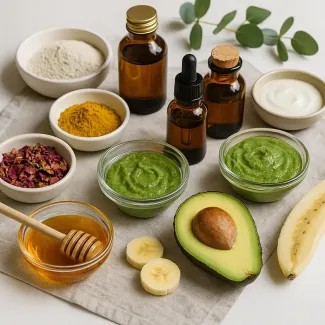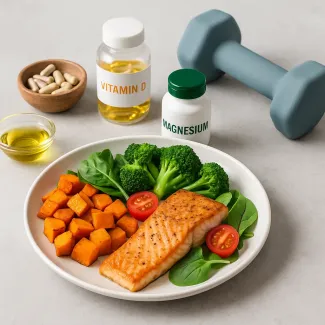
Unlocking Hormonal Harmony Through Smarter Training Choices
How exercise affects insulin sensitivity and testosterone balance after 30
Understanding the connection between hormones and fitness
After the age of 30, the body begins to experience subtle but significant hormonal changes that affect everything from energy levels to muscle recovery. Two of the most influential hormones in this dynamic are insulin and testosterone. While they serve different physiological roles, their interaction plays a pivotal role in shaping how the body processes nutrients, builds muscle, stores fat, and maintains metabolic equilibrium.
Insulin, produced by the pancreas, is central to blood sugar regulation and cellular energy delivery. Testosterone, primarily known as the male sex hormone (but also present in females), governs muscle growth, fat distribution, libido, and bone density. Both hormones are deeply influenced by physical activity, but the type, intensity, and timing of exercise can determine whether they remain in balance or begin to shift out of sync.
Modern lifestyles, marked by sedentary work, processed diets, and irregular sleep patterns, often disrupt hormonal balance. But the right workout regimen—tailored for hormonal support—can reverse or prevent this trend. Understanding how different types of movement affect insulin sensitivity and testosterone production is key for anyone over 30 looking to improve their metabolic health, sustain lean muscle mass, and reduce systemic inflammation.
Why hormonal balance matters more after 30
As metabolism slows and hormonal rhythms shift in our 30s and 40s, many begin to notice increased fat retention, lower energy, and difficulty gaining lean muscle even with regular workouts. This often isn't due to a lack of discipline, but rather a lack of alignment between training and internal hormonal systems.
Insulin resistance, for example, becomes more common with age, especially with high-carb diets, chronic stress, and low physical activity. At the same time, testosterone levels can gradually decline in both men and women, contributing to symptoms like fatigue, poor mood, reduced motivation, and decreased muscle tone. These changes are interconnected, and correcting one can positively influence the other.
Regular exercise is one of the most powerful interventions available. When applied correctly, it can increase insulin sensitivity, stimulate natural testosterone production, and help the body reestablish a healthier metabolic set point. This is not about “working harder”—it’s about training smarter to support your endocrine system.
Resistance training and testosterone: a natural synergy
Among all forms of exercise, resistance training stands out as the most effective strategy to enhance testosterone levels naturally. Multi-joint, compound movements such as squats, deadlifts, lunges, bench presses, and rows stimulate not only large muscle groups but also elicit greater hormonal responses.
Lifting weights causes micro-tears in muscle fibers that trigger repair mechanisms driven in part by testosterone. Engaging in progressive overload, where weights are gradually increased over time, provides the consistent stimulus needed to sustain testosterone output.
The ideal rep range for hormonal support lies between 6–12 reps per set, focusing on moderate to heavy resistance. Rest periods should range from 60 to 90 seconds to maintain elevated heart rate and maximize testosterone response. Including explosive movements, such as kettlebell swings or Olympic lifts, may further enhance anabolic signaling in younger and middle-aged adults.
Working out at least three to four times a week with resistance-based sessions can prevent the age-related decline in testosterone. It also supports muscle preservation, improved body composition, and better insulin response—all of which are interlinked components of metabolic well-being.
High-intensity intervals and insulin sensitivity
Where resistance training takes the lead on testosterone, high-intensity interval training (HIIT) excels in improving insulin sensitivity. HIIT involves alternating bursts of high effort (like sprints or fast cycling) with short periods of rest or lower intensity.
This format rapidly depletes glycogen stores in muscles, forcing the body to improve its use of insulin to replenish these reserves. Over time, the body becomes more efficient at glucose uptake, requiring less insulin to manage blood sugar—a huge benefit for anyone struggling with insulin resistance or prediabetes.
Studies suggest that just 15–25 minutes of HIIT, two to three times per week, can lead to measurable improvements in blood sugar control, fat metabolism, and cardiovascular fitness. Importantly, HIIT also triggers short bursts of testosterone release, further strengthening the hormonal synergy of the routine.
However, balance is crucial. Excessive HIIT without adequate rest can increase cortisol, the stress hormone, which competes with testosterone and can reduce insulin sensitivity when chronically elevated. Therefore, recovery days are not optional—they’re essential.
Low-intensity movement and hormonal recovery
While high-intensity and resistance training steal the spotlight, low-intensity steady-state (LISS) cardio and daily non-exercise movement (like walking or mobility work) are essential for hormonal recovery. Gentle activity helps regulate cortisol, improve lymphatic drainage, and maintain fat-burning states without placing additional stress on the endocrine system.
Including 30–60 minutes of walking, light cycling, swimming, or yoga on off days enhances mitochondrial function, supports blood flow, and stabilizes mood—all of which are indirectly connected to healthier hormonal profiles. Activities like yoga and tai chi have also been linked to improvements in insulin function through the modulation of the autonomic nervous system.
This type of activity doesn’t spike testosterone but creates the physiological environment where hormones can return to homeostasis. For those over 30 juggling work and family life, LISS offers a low-barrier, restorative way to stay active and balance demanding workout days.
Nutritional strategies that support hormonal exercise benefits
Exercise and nutrition are two sides of the same coin. You can train perfectly, but without strategic fueling, your hormonal system won’t respond optimally. After workouts—especially resistance or HIIT—muscles become more receptive to nutrient uptake, making this a key window for supporting insulin and testosterone.
Post-workout meals should combine high-quality protein (like eggs, salmon, or plant-based options) with complex carbohydrates (like sweet potatoes, oats, or quinoa) and healthy fats (avocado, olive oil, nuts). This combination not only promotes muscle recovery but also stabilizes blood sugar, reduces post-training cortisol, and provides substrates for hormone production.
Zinc, vitamin D, and magnesium are especially important for testosterone regulation. Foods like pumpkin seeds, sardines, dark chocolate, and leafy greens can help replenish these. Meanwhile, fiber-rich foods (e.g., legumes, flaxseeds, berries) support insulin sensitivity and feed beneficial gut bacteria that indirectly affect hormonal balance.
Avoid excessive sugar, trans fats, and alcohol, which can derail hormonal responses and blunt the benefits of training. Maintaining stable blood glucose throughout the day reduces insulin spikes and protects against hormonal imbalances that lead to fatigue, fat gain, and metabolic slowdown.
Timing and circadian alignment in hormone-friendly training
Beyond what you do, when you do it matters. Human hormonal rhythms follow a circadian cycle, and aligning workouts with your chronotype may amplify benefits. Testosterone levels are naturally higher in the early morning, making this an ideal window for strength training or explosive movement.
On the other hand, insulin sensitivity tends to peak in the late morning to early afternoon, which may be the best time for HIIT or endurance workouts. Exercising too close to bedtime, especially high-intensity work, can disrupt sleep, interfere with melatonin production, and ultimately harm hormonal recovery.
Establishing a consistent training schedule aligned with natural energy rhythms can reinforce hormonal stability. Combining light exposure, morning movement, and regular sleep-wake times contributes to the orchestration of insulin and testosterone across a 24-hour cycle.
Sleep and stress management for hormonal training results
No routine will work if sleep is broken or stress remains unaddressed. These two factors have a profound impact on both insulin response and testosterone regulation. Chronic sleep deprivation lowers testosterone and increases insulin resistance within days. Similarly, persistent psychological stress elevates cortisol, which directly blocks testosterone production and encourages abdominal fat gain.
A successful training plan must integrate tools to improve sleep quality, such as sleep hygiene, blue light avoidance, and magnesium-rich evening meals. Recovery practices like meditation, breathwork, or short naps can regulate cortisol and maintain the internal hormonal rhythm that supports the gains from exercise.
Even deload weeks, where training intensity and volume are reduced, are valuable strategies for maintaining hormonal balance while preventing injury or overtraining. These “active recovery” weeks are especially important for adults over 30 whose recovery capacity naturally declines with age.
Creating a sustainable weekly plan for hormonal balance
Designing a well-rounded weekly training plan to balance insulin and testosterone may look like:
- 2–3 days of full-body resistance training
- 2 sessions of HIIT (20–25 minutes max)
- 2–3 days of walking, yoga, or light cardio
- 1 day of full rest or active recovery
- Daily attention to sleep quality, nutrient-dense meals, and hydration
The emphasis should be on sustainability, not perfection. Allow for flexibility within your routine while staying anchored to the principles of hormonal support. This not only supports physical health but also enhances mood, mental clarity, and long-term motivation—all vital components of a healthy lifestyle after 30.
Signs your routine is working
How do you know if your training is supporting hormonal balance? Watch for signs like:
- Improved energy stability throughout the day
- Reduction in sugar cravings
- Easier fat loss, especially around the waist
- Enhanced muscle tone and strength
- Better sleep depth and quality
- Noticeable improvement in mood and resilience to stress
These indicators often show up gradually, and consistency over 4–8 weeks is typically required before hormonal adaptation becomes apparent. Keep a journal or track key metrics (sleep, energy, hunger, body composition) to stay tuned in.
Training for hormonal balance is not just a physical commitment, but a holistic one. When insulin and testosterone are aligned through intelligent exercise, proper recovery, and nutrient-dense support, your body becomes more responsive, more resilient, and better equipped to thrive in every decade of life.
